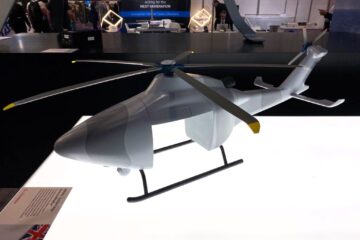Innovative X-plane designs from an array of companies aim to benefit U.S. Navy, other services
DARPA press release
The innovative configurations and critical technology designs come from a wide array of performers, from small start-up to legacy aerospace companies, broadening the network of partners contributing to the program.
“The goal of ANCILLARY is to increase small vertical take-off and landing (VTOL) uncrewed aerial system (UAS) capabilities by a factor of three over the current state-of-the-art flying today,” said Steve Komadina, DARPA program manager for ANCILLARY. “Our performers are searching for innovative ways to increase payload weight and range/endurance of small, ship-launched UAS by means of novel configurations, propulsion, and controls while also removing the need for special infrastructure.”
In Phase Ib, performers will continue risk reduction design, analyses, and tests for an X-plane demonstrator to prove out technologies for a future operational UAS that can be deployed and retrieved from Navy ships without the large mechanical launchers and landing/recovery equipment used today. The small UAS will need to take off and land vertically – like a helicopter – from ship flight decks and out-of-the-way land locations in most weather conditions but fly missions like a very efficient winged aircraft while carrying significant payload when needed.
“A network of these small UAS can be launched from a ship to provide beyond-line-of-sight F2T2 (find, fix, track, target) of surface vessels of interest for the ship commander,” Komadina said. “While we anticipate this effort is most likely to support Navy and Marine missions, we have found other services are very interested in the capabilities this technology can bring to diverse missions, including logistics, strike, and special uses by the Army, Air Force, Special Operations Command, and Coast Guard.”
“We expect the operational capabilities provided by ANCILLARY will be augmented by other technologies being developed within the Department of Defense’s various research and engineering organizations, such as advances in sensors, electronic warfare, and especially autonomy and artificial intelligence,” said Komadina.

In Phase Ia, the ANCILLARY team explored conceptual designs from nine non-traditional and traditional military companies.
In Phase Ib, six companies – AeroVironment, Griffon Aerospace, Karem Aircraft, Method Aeronautics, Northrop Grumman, and Sikorsky – will mature X-plane designs, with concentration on reducing system risks through refined higher fidelity design and analysis and by conducting component and configuration hover testing. At the end of this 10-month phase, teams will submit competitive proposals for Phase II detailed design, fabrication, and flight testing.
The project is expected to culminate with X-plane flight tests starting in early 2026.





